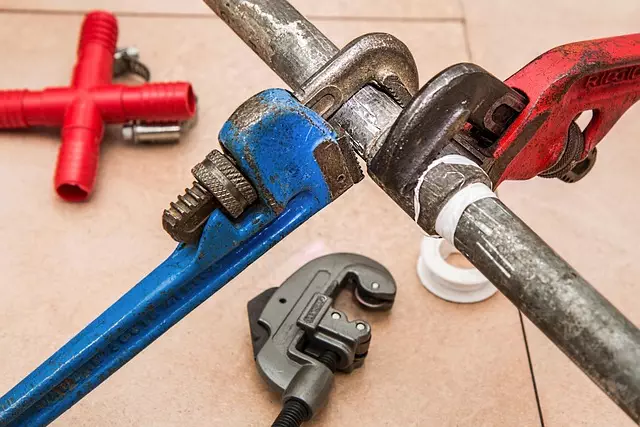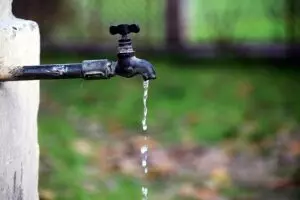Non-Invasive Leak Detection: Transforming Industrial Maintenance with Advanced Technology
Non-Invasive Leak Detection (NILD) is a cutting-edge solution transforming water management by effic…….

Non-Invasive Leak Detection (NILD) is a cutting-edge solution transforming water management by efficiently identifying leaks without excavation. Using advanced sensors and monitoring systems, NILD employs RF signals, ultrasonic waves, and pressure changes to locate leaks accurately in real-time. This eco-friendly method reduces infrastructure damage, water waste, and environmental impact compared to traditional techniques. In diverse industries like oil & gas, chemical processing, and water treatment, NILD minimizes downtime, repair costs, and safety risks through early leak detection, fostering sustainable practices and operational efficiency. Future trends include smart sensors, AI, and drone technology for more accurate and comprehensive leak identification.
“Uncover the power of non-invasive leak detection, a game-changing technology revolutionizing industries worldwide. This comprehensive guide explores innovative solutions that offer a subtle yet effective approach to identifying leaks without causing disruption. From understanding the fundamentals to delving into advanced technologies, we dissect traditional methods versus modern non-invasive techniques. Discover how these systems benefit critical sectors, overcome challenges, and shape the future of leak detection through case studies and expert insights.”
Understanding Non-Invasive Leak Detection: A Comprehensive Overview

Non-Invasive Leak Detection is a cutting-edge technology revolutionizing the way we identify and address water leaks. Unlike traditional methods that require excavation and physical inspection, this innovative approach offers a comprehensive, efficient, and environmentally friendly solution. By utilizing advanced sensors and monitoring systems, it can pinpoint leak locations with remarkable accuracy without disturbing the surrounding area.
This method leverages various techniques such as radio frequency (RF) signals, ultrasonic waves, and pressure monitoring to detect even subtle changes in fluid flow patterns. Once a leak is identified, data is transmitted in real-time for immediate analysis. This enables utility companies and facility managers to take prompt action, minimizing water waste, damage to infrastructure, and the environmental impact associated with traditional repair methods.
The Traditional Methods of Leak Detection vs. Non-Invasive Techniques

In the realm of leak detection, traditional methods have long been the go-to approach, involving invasive techniques that can be time-consuming and disruptive. These conventional tactics often require physical access to the system or pipeline, entailing excavation, disassembly, or even shutting down operations temporarily. During these processes, specialized personnel search for signs of leaks by tracing pipes, detecting pressure changes, or employing various chemical tracers. While effective, traditional methods can be costly, labor-intensive, and may cause significant delays in critical infrastructure situations.
Non-invasive leak detection, on the other hand, emerges as a game-changer, offering efficient and precise alternatives. Modern technologies enable technicians to identify leaks without causing any physical damage or interrupting services. Advanced sensor systems, ground-penetrating radar (GPR), infrared thermography, and acoustic imaging are among the tools employed. These non-invasive techniques provide real-time data, allowing for faster leak localization and minimal disruption to operations. As a result, facilities can benefit from reduced downtime, lower maintenance costs, and enhanced overall efficiency in managing their water or gas distribution systems.
How Non-Invasive Technology Works to Locate Leaks

Non-invasive leak detection technologies have revolutionized the way we identify and locate leaks, especially in complex systems like pipes, reservoirs, and underground storage tanks. These advanced methods offer a safe and effective alternative to traditional invasive techniques, which often involve excavation and disruption of the environment. By utilizing specialized sensors and sophisticated data analysis, non-invasive technology can pinpoint leak locations with remarkable accuracy.
The process typically starts with deploying sensitive sensors around the area of interest. These sensors are designed to detect subtle changes in pressure, temperature, or sound waves caused by leaking fluids. For example, acoustic sensors emit sound waves that travel through pipes or soil, and any disruption or echo can indicate a potential leak. Similarly, pressure sensors measure variations in fluid pressure, while thermal sensors detect heat signatures unique to leaking fluids. Once data is collected, advanced algorithms interpret the signals, creating detailed maps of the area and identifying specific locations where leaks are most likely to occur.
Benefits of Choosing Non-Invasive Leak Detection Systems

Non-invasive leak detection systems offer a multitude of benefits over traditional, invasive methods. Firstly, they eliminate the need for costly and time-consuming excavation or disassembly of pipes and equipment, reducing project timelines and expenses significantly. This non-disruptive approach ensures minimal disruption to operations and minimizes potential safety hazards associated with open trenches or exposed pipelines.
Moreover, these advanced systems provide accurate leak location without the use of harmful chemicals or disruptive techniques. By leveraging cutting-edge technology like acoustic sensors or electromagnetic waves, they can pinpoint leaks precisely, allowing for targeted repairs and preventing further damage or waste. This results in improved sustainability, reduced environmental impact, and longer-lasting infrastructure.
Industries Benefiting from Early Leak Detection Using Non-Invasive Methods

In today’s industrial landscape, early leak detection using non-invasive methods is a game-changer across various sectors. From oil and gas to chemical processing, water treatment, and even renewable energy facilities, the benefits of implementing advanced leak detection technologies are significant. These industries face constant challenges related to potential leaks, which can lead to severe environmental damage, safety hazards, and substantial economic losses. By adopting non-invasive leak detection techniques, such as acoustic sensors, infrared thermography, and ultrasonic transducers, companies can proactively identify and address issues before they escalate.
Early detection enables industries to minimize downtime, reduce repair costs, and enhance overall operational efficiency. For instance, in the oil and gas industry, non-invasive methods allow for the monitoring of pipelines and storage tanks without disrupting operations or posing safety risks. This proactive approach ensures that any anomalies are swiftly addressed, preventing major incidents and contributing to a safer, more sustainable working environment.
Common Challenges and Limitations in Implementing Non-Invasive Solutions

Implementing non-invasive leak detection solutions comes with its share of challenges and limitations, particularly in complex industrial settings. One of the primary hurdles is overcoming the interference from existing infrastructure, such as dense piping networks or metallic structures, which can impede the signal strength and accuracy of non-invasive sensors. These external factors often require advanced signal processing algorithms to filter out noise and ensure reliable data transmission.
Another challenge lies in addressing the dynamic nature of fluid flow, especially in high-pressure systems. Non-invasive methods rely on subtle changes in pressure or magnetic fields caused by leaks; however, rapid flow rates or sudden pressure drops can mask these signals. Accurately detecting such leaks demands sophisticated data analytics and real-time monitoring capabilities to analyze patterns and identify anomalies effectively.
Future Trends: Advancements in Non-Invasive Leak Detection Technology

The future of leak detection technology looks promising, with continuous advancements pushing the boundaries of what’s possible in non-invasive methods. One of the key trends is the integration of smart sensors and artificial intelligence (AI). These advanced sensors can detect even minute changes in pressure or sound waves, allowing for early leak indications. AI algorithms enhance these signals, providing accurate location and size estimates without the need for intrusive inspections.
Another exciting development is the rise of drone technology. Drones equipped with high-resolution cameras and thermal imaging can access hard-to-reach areas, offering a bird’s-eye view of potential leaks. This technology not only improves safety by minimizing the risk to human inspectors but also increases efficiency and coverage, especially in large industrial facilities or complex pipeline networks.
Case Studies: Successful Deployments of Non-Invasive Leak Detection Systems

Non-Invasive Leak Detection (NILD) systems have proven their value through numerous successful deployments across various industries. Case studies highlight the effectiveness of these technologies in identifying leaks without causing disruption to operations or infrastructure. For instance, in the oil and gas sector, NILD has been instrumental in preventing costly downtime and environmental damage by detecting subtle changes in pressure and flow patterns, allowing for swift action before a major leak occurs.
Similarly, water utility companies have embraced NILD to optimize maintenance and reduce losses. By deploying these systems in hard-to-reach areas or along extensive pipe networks, utilities can pinpoint leaks with remarkable accuracy, minimizing water waste and improving customer service. These real-world applications underscore the versatility and reliability of non-invasive leak detection technologies, making them a preferred choice for modern infrastructure management.
Choosing the Right Non-Invasive Solution for Your Specific Needs

Selecting the optimal non-invasive leak detection method hinges on understanding your unique requirements and the specific application. Each leak detection technology offers distinct advantages and is suited to different scenarios. For instance, some solutions excel in identifying subtle gas leaks, while others are more effective for liquid or structural damage assessments.
When choosing a non-invasive solution, consider factors such as the type of substance to be detected (gas, liquid), the size and accessibility of the area, existing infrastructure, and desired level of sensitivity. By carefully evaluating these aspects, you can select a leak detection method that provides accurate results while aligning with your project’s specific needs, ensuring efficient and effective leak identification and resolution.







